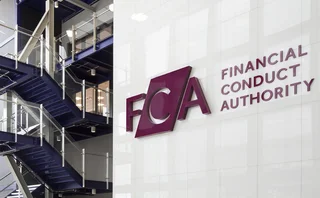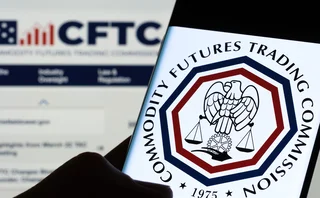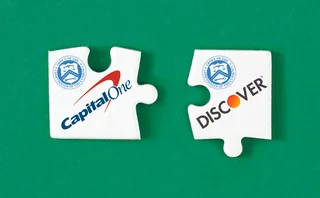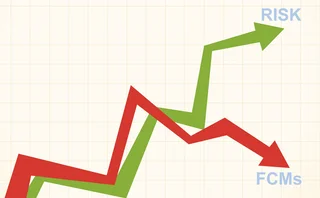
Thirty years of Risk magazine
Special features will look at the future of bank technology, quantitative research, risk transfer and regulation
This year is the 30th anniversary of Risk magazine’s launch; good going for a title that started life with a relatively hazy mission, and journalists who spent the first couple of years “fumbling our way through uncharted territory”, as founder Peter Field later wrote.
The magazine was not alone in that. Bankers Trust, Morgan Grenfell, Salomon Brothers, Swiss Banking Corporation and other long-gone names were exploring the potential of the over-the-counter derivatives markets on trading floors that had a single desktop computer; the International Swap Dealers Association was drawing up its first master agreement; and the bank regulators of 12 nations were working on a common prudential framework that would come to be known as the Basel Capital Accord.
As the world has changed, so has the content of Risk magazine, but the quantitative, technical thread running through the coverage remains the same – and so does our aim. As was the case for Peter and his original team, our journalists today are still looking for important, under-reported stories in the worlds of risk management and risk transfer.
There is another similarity. Today, market participants are again taking tentative steps into a world with no maps. Wherever you look, business models, products and services are being challenged – many are already in flux – and the winners have yet to be decided.
So, we will not be spending our anniversary year looking backwards. Over the course of 2017, we will examine some of the topics where the scope for change seems greatest, and try to sketch out the future.
First, we will look at some of the ways in which dealers are trying to use technology to buttress their trading businesses. That crop of articles will be available online later in February, and will appear in the next print edition.
Then, in sequence, we’ll be looking at the changing role of quants and how the leading quantitative finance courses are adapting; the transfer of exotic risks from dealers to asset managers; and the future of international regulatory standards. We’ll pick two more topics as the year wears on, and will also be running a series of interviews with some of the biggest names from around our markets. All of this material will bear the ‘Risk30’ logo.
Trying to divine the future can, of course, be perilous, but journalists have far less to lose than the individuals and organisations we write for. Good luck to all of you, and many thanks for your support over the years.
Only users who have a paid subscription or are part of a corporate subscription are able to print or copy content.
To access these options, along with all other subscription benefits, please contact info@risk.net or view our subscription options here: http://subscriptions.risk.net/subscribe
You are currently unable to print this content. Please contact info@risk.net to find out more.
You are currently unable to copy this content. Please contact info@risk.net to find out more.
Copyright Infopro Digital Limited. All rights reserved.
You may share this content using our article tools. Printing this content is for the sole use of the Authorised User (named subscriber), as outlined in our terms and conditions - https://www.infopro-insight.com/terms-conditions/insight-subscriptions/
If you would like to purchase additional rights please email info@risk.net
Copyright Infopro Digital Limited. All rights reserved.
You may share this content using our article tools. Copying this content is for the sole use of the Authorised User (named subscriber), as outlined in our terms and conditions - https://www.infopro-insight.com/terms-conditions/insight-subscriptions/
If you would like to purchase additional rights please email info@risk.net
More on Regulation
UK investment firms feeling the heat on prudential rules
Signs firms are falling behind FCA’s expectations on wind-down and liquidity risk management
The American way: a stress-test substitute for Basel’s IRRBB?
Bankers divided over new CCAR scenario designed to bridge supervisory gap exposed by SVB failure
Industry warns CFTC against rushing to regulate AI for trading
Vote on workplan pulled amid calls to avoid duplicating rules from other regulatory agencies
Bank of Communications moves early to meet TLAC requirements
China Construction Bank becomes sole remaining China G-Sib not to have released TLAC plans
Industry pushes to extend review for Emir active accounts rule
Fears that compressed timeframe leaves less than a year to test if controversial policy is working
Banks will not be frowned upon for discount window borrowing – Fed official
Risk Live: more banks have completed paperwork to access Fed lending facility than a year ago
Capital One puts OCC’s tough stance on mergers to the test
Proposed Discover deal should be approved but will go under the microscope, ex-regulators say
As FCMs dwindle, regulators fear systemic risk
Panellists highlight dangers of clearing membership becoming more concentrated
Most read
- Top 10 operational risks for 2024
- The American way: a stress-test substitute for Basel’s IRRBB?
- Hidden Road ready for rush hour after FCM approval








